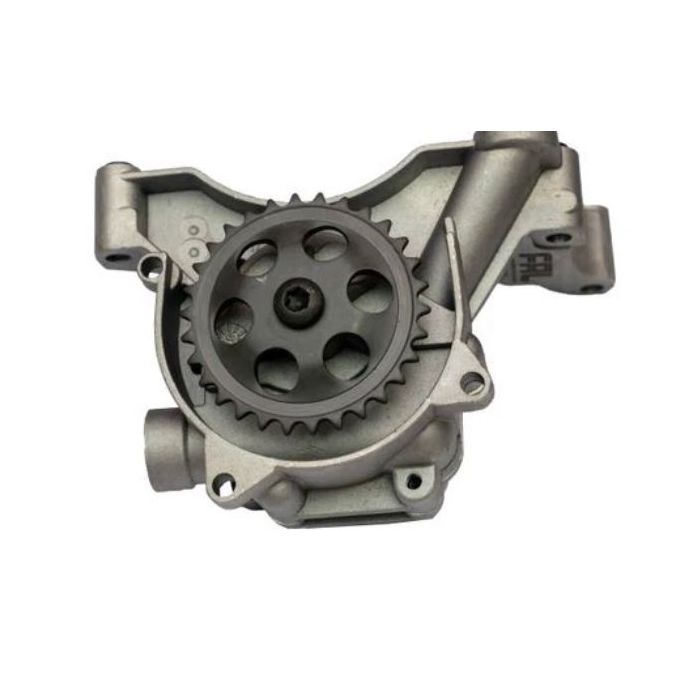Upgrade your machinery with a high-quality clp engine.
Upgrade your machinery with a high-quality clp engine.
Blog Article
Exactly How a Clp Engine Can Improve Efficiency in Various Industries
The development of CLP engines marks a significant change in functional efficiency throughout numerous industries, driven by their capacity to enhance fuel intake and minimize downtime. Industries such as production and logistics stand to obtain considerably from their durable style and constant power result, which guarantee to simplify procedures and improve performance. As organizations progressively focus on sustainability alongside performance, the duty of CLP engines becomes much more essential. What continues to be to be seen is exactly how these improvements will form the future landscape of commercial procedures and their effect on more comprehensive economic trends (clp engine).
Overview of CLP Engines
CLP engines, or Constant Fluid Propellant engines, represent a considerable improvement in propulsion technology, specifically for space applications. These engines utilize a continual feed system that permits the sustained expulsion of propellant, causing improved effectiveness and efficiency compared to traditional strong or hybrid propulsion systems. By preserving a constant flow of fluid propellant, CLP engines can attain a lot more accurate drive control, which is vital for maneuvering spacecraft in different mission circumstances.
The style of CLP engines integrates innovative products and cutting-edge gas management systems. clp engine. This results in minimized weight and enhanced reliability, vital variables for long-duration area goals. In addition, the continuous operation reduces the danger of burning instability, a typical obstacle in conventional rocket engines.

Benefits in Manufacturing
The production of Continual Liquid Propellant (CLP) engines offers a number of remarkable benefits that boost both performance and cost-effectiveness. One of the primary benefits is the structured production process, which lowers the complexity related to standard propulsion systems. By utilizing fluid propellant, producers can attain greater precision in engine performance, bring about maximized energy result and lowered waste.
In addition, CLP engines promote a greater level of modularity, enabling much easier combination right into different production lines. This versatility can substantially lower preparations and improve overall functional adaptability. Using CLP innovation likewise often tends to lessen the need for substantial upkeep as a result of fewer moving parts, which converts right into lowered downtime and functional prices.

Applications in Logistics
Leveraging Constant Fluid Propellant (CLP) engines in logistics supplies significant benefits in functional performance and reliability. These engines provide a robust service for different transport demands, enabling the seamless movement of items across huge ranges. The integral layout of CLP engines enables consistent power output, which equates into smoother and extra predictable transportation routines.
Among the essential applications of CLP engines in logistics is in sturdy products transportation, where they can drive both ground and airborne vehicles. Their capability to preserve high efficiency under differing load problems guarantees that distribution timelines are met, consequently improving client fulfillment. Furthermore, CLP engines can be integrated right into automated logistics systems, facilitating real-time tracking look at this website and maximizing route planning.
Additionally, the toughness of CLP engines lowers maintenance downtime, enabling logistics firms to optimize their operational abilities. This is particularly useful in warehousing procedures, where effectiveness in handling and carrying goods is critical. As logistics continues to advance, the assimilation of CLP engines stands for a forward-thinking approach that not only boosts efficiency yet also sustains the market's expanding needs for reliability and rate.
Effect On Power Performance
Just How do Continuous Liquid Propellant (CLP) engines boost energy performance in transport? CLP engines make use of a constant flow of liquid fuel, optimizing combustion procedures and keeping a stable drive output. This layout reduces power losses related to traditional combustion engines, where fuel delivery can differ and lead to inadequacies.
The continuous procedure of CLP engines permits a much more efficient thermal cycle, resulting in higher details impulse contrasted to standard engines. clp engine. This converts to reduced fuel intake for the same amount of work done, considerably lowering operational costs across various transport fields, including aeronautics and maritime industries
Moreover, the capability of CLP engines to maintain optimal performance under varying tons problems minimizes the demand for frequent velocity and deceleration, further improving fuel efficiency. Improved power effectiveness not only adds to cost financial savings yet also causes decrease greenhouse gas emissions, straightening with international sustainability objectives.
Future Trends and Innovations
Arising improvements in original site Continual Liquid Propellant (CLP) engine innovation guarantee to change the landscape of transportation performance and sustainability. As sectors pivot toward greener options, CLP engines stand at the leading edge, incorporating ingenious products and style methods that boost performance while reducing ecological impact.
One of one of the most encouraging patterns is the fostering of hybrid systems that integrate CLP engines with renewable energy sources. This synergy can maximize fuel consumption and decrease emissions, straightening with global sustainability objectives. Innovations in computational fluid characteristics (CFD) are assisting in the design of even more aerodynamically reliable engines, leading to lowered drag and boosted gas performance.
In addition, the advancement of clever monitoring systems is readied to enhance operational effectiveness. These systems utilize data analytics and IoT technology to optimize engine efficiency in real-time, making sure that the engines run within their most reliable specifications.
As research study remains to check out alternate propellant formulas-- such as biofuels and artificial gas-- the future of CLP engines looks appealing. By using these technologies, industries can not only enhance their performance yet additionally contribute considerably to a cleaner, extra lasting future in transportation.
Conclusion
Finally, CLP engines stand for a considerable development in effectiveness across numerous sectors. Their capability to maximize fuel consumption and reduce operational prices, incorporated with a continuous feed system, improves power outcome and operational dependability. The combination of advanced materials and fewer moving parts reduces maintenance needs, while placement with sustainability goals placements CLP engines as a pivotal innovation for the future. Proceeded technology in this field promises more enhancements in effectiveness and environmental performance.
Report this page